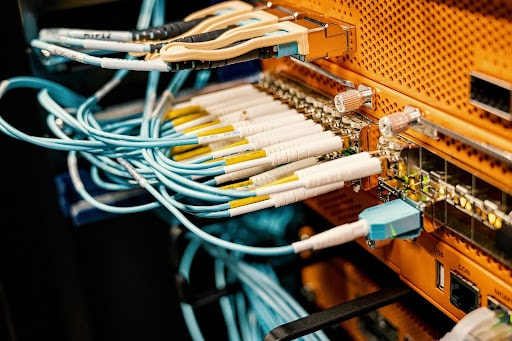Stepping into the network maze? Beware of the pitfalls!” Network setup is an important yet tricky part of building a strong IT foundation. It’s the lifeline for business operations and communication. But it’s not without its challenges. From the tricky compatibility issues to the security risks and the trap of poor planning, PC and Cables got you covered.
In this blog, we highlight the five main pitfalls you might face when installing up and integrating your network. We’ll walk you through each obstacle, providing straightforward solutions to make your network not only work smoothly but also be strong and dependable for your business’s growth. Prepare to shift your network setup from risky to rock-solid!
Pitfall 1: Inadequate Planning
Inadequate planning stands as a primary pitfall that can lead to significant operational disruptions and financial losses. Comprehensive planning is the cornerstone of a successful network setup, as it ensures all elements of the network, from hardware to software, are seamlessly integrated and aligned with the organization’s objectives.
The absence of thorough planning can result in;
- compatibility issues,
- scalability problems, and
- unforeseen expenses,
Solution:
To tackle these network challenges, it’s essential to strategically plan by deeply analyzing:
- business needs
- future growth
- security risks.
Careful and forward-thinking planning is key, allowing you to build a strong network infrastructure that not only meets today’s demands but also adapts to future needs. This approach guarantees enduring success and stability in the rapidly changing digital environment.
Pitfall 2: Ignoring Compatibility Issues
Ignoring compatibility issues is a critical pitfall in network installation that can lead to a host of performance problems and operational inefficiencies. When hardware and software components are not compatible, it can result in:
- System conflicts
- Decreased network performance
- Increased downtime,
Compatibility problems can stem from:
- Outdated hardware,
- Mismatched software versions, or
- Inadequate integration testing.
Solution:
To navigate these complexities, it is essential to conduct comprehensive compatibility assessments before integrating new systems into the existing network infrastructure. This includes:
- verifying hardware specifications,
- ensuring software interoperability, and
- conducting pilot tests
Focusing heavily on compatibility helps you create a network system that is both reliable and efficient, suited to present requirements and future growth. Conducting an extensive compatibility assessment during the network installation phase reduces risks and improves the network’s overall functionality and user experience.
Pitfall 3: Neglecting Security Measures
Overlooking security during network setup is dangerous and can leave you vulnerable to cyber threats like data breaches, endangering confidential data and the smooth operation of the business. Weak security makes it easier for hackers to enter the system and cause severe problems, including:
- Stealing data
- Completely halting the network
- Unauthorized entries
- Malware
- Ransomware
Solution:
It’s crucial to enhance network setups by following top cybersecurity practices.
This means setting up:
- strong firewalls,
- monitoring systems for intrusions,
- performing regular security checks, and
- security patches.
Focusing on network security from the start helps you build a strong defense that protects your digital assets and ensures the reliability and integrity of your network infrastructure.
Pitfall 4: Inadequate Testing
Inadequate testing during network installation is a pitfall that can lead to undetected system vulnerabilities and performance issues, resulting in network instability and potential failures.
Thorough testing is crucial for validating the functionality, reliability, and security of the network infrastructure. Common testing oversights, such as:
- skipping stress tests
- ignoring end-user experience simulations
- neglecting security vulnerability assessments,
Solution:
To avoid these pitfalls, organizations must implement comprehensive testing protocols that encompass all aspects of the network. This includes:
- Conducting load testing to assess performance under peak usage
- Simulating real-world user interactions to ensure a seamless experience
- Performing regular security checks to identify and resolve potential threats.
By adopting this approach to network testing, you can ensure their network is robust, secure, and capable of supporting the operational requirements.
Pitfall 5: Poor Documentation and Training
Overlooking documentation and training in network installation can lead to significant challenges in system management and troubleshooting, resulting in increased operational risks and inefficiencies.
- Insufficient documentation leaves IT teams without the necessary reference materials to understand network configurations and resolve issues efficiently,
- Inadequate training can result in improper handling of the network infrastructure, potentially leading to system failures and security breaches.
Solution:
By investing in thorough documentation and robust training initiatives, you can enhance network installation and integration.
- Proper documentation should include detailed network schematics, configuration settings, and operational procedures
- Comprehensive training programs are crucial for equipping staff with the skills and knowledge needed to manage the network effectively and respond to incidents smoothly.
These measures ensure increased network management capabilities, reduce downtime, and a secure and stable network environment.
Takeaways
Handling network installation and integration carefully is key to building a strong and effective network. This involves detailed planning, checking for compatibility, securing the system, conducting thorough tests, and providing good documentation and training. Skipping any of these steps can cause you major operational problems and security risks. By actively managing these areas, you can create a solid, secure network that meets your needs. Sticking to these principles leads to a smooth, safe, and scalable network, supporting your ongoing success and growth.
Frequently Asked Questions
-
What is network installation and integration?
It’s the process of setting up and connecting network components to form a functional IT system.
-
Why is planning important in network installation?
Proper planning prevents future problems like system incompatibilities and performance issues.
-
How can I avoid compatibility issues in my network?
Test hardware and software beforehand to ensure they work well together.
-
What are the key security measures for network installation?
Use firewalls, and antivirus software, and conduct regular security checks.
-
Why is documentation and training important in network installation?
They help in managing the network effectively and solving problems quickly.

